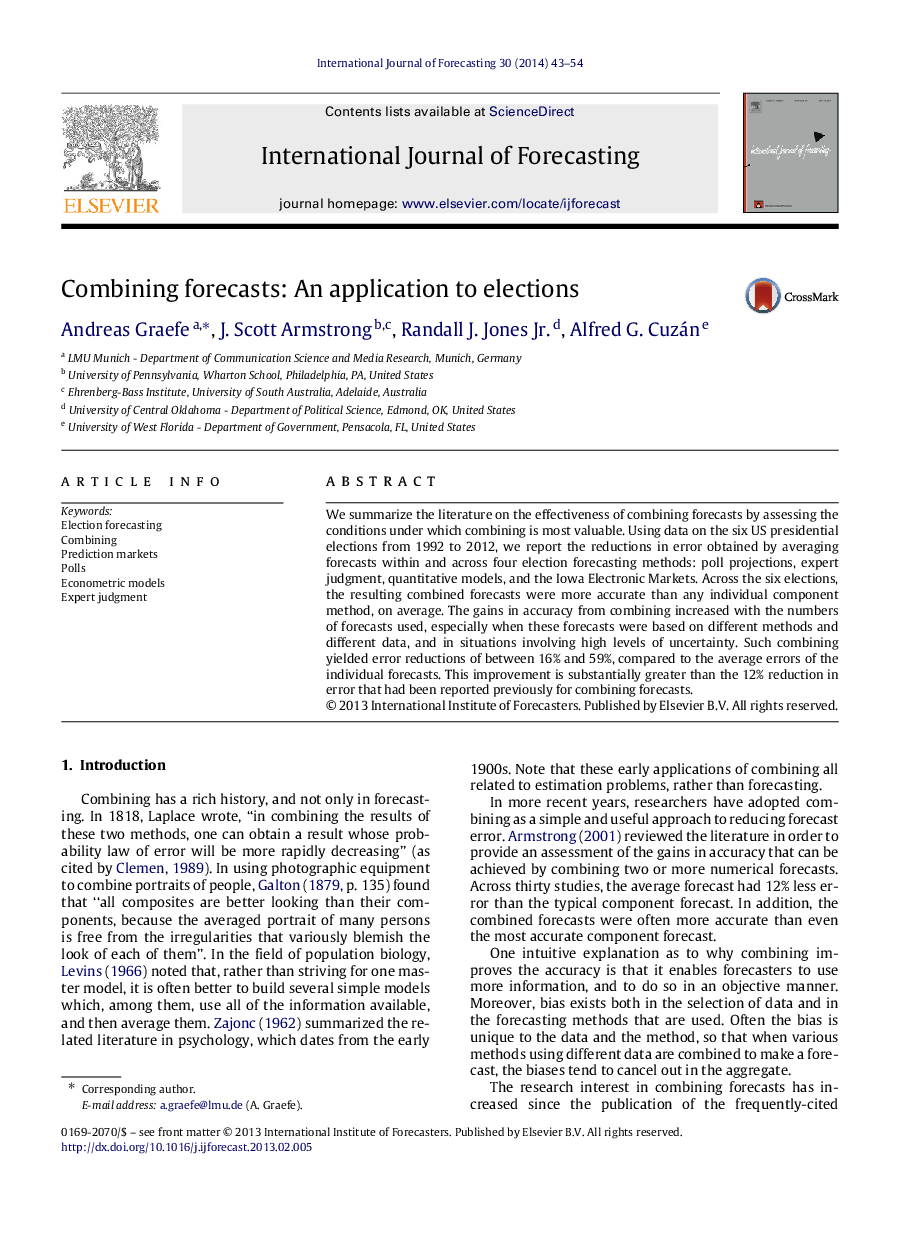| Article ID | Journal | Published Year | Pages | File Type |
|---|---|---|---|---|
| 7408532 | International Journal of Forecasting | 2014 | 12 Pages |
Abstract
We summarize the literature on the effectiveness of combining forecasts by assessing the conditions under which combining is most valuable. Using data on the six US presidential elections from 1992 to 2012, we report the reductions in error obtained by averaging forecasts within and across four election forecasting methods: poll projections, expert judgment, quantitative models, and the Iowa Electronic Markets. Across the six elections, the resulting combined forecasts were more accurate than any individual component method, on average. The gains in accuracy from combining increased with the numbers of forecasts used, especially when these forecasts were based on different methods and different data, and in situations involving high levels of uncertainty. Such combining yielded error reductions of between 16% and 59%, compared to the average errors of the individual forecasts. This improvement is substantially greater than the 12% reduction in error that had been reported previously for combining forecasts.
Related Topics
Social Sciences and Humanities
Business, Management and Accounting
Business and International Management
Authors
Andreas Graefe, J. Scott Armstrong, Randall J. Jr., Alfred G. Cuzán,
